Remember back before the lockout ended? It was a simpler time. Those of us who live for Fantasy Baseball got a chance to redraft over and over for a league in stasis, preserved just as it was on Dec. 1.
Yes, a simpler time.
Much has changed since then. The lockout was lifted, and the hot stove became a raging inferno remaking rosters with unprecedented speed. We’re left to pick up the pieces, with opening day barreling down upon us.
It seemed worthwhile, then, to condense the onslaught of information into what’s most essential for Fantasy Baseball purposes, namely by identifying the players whose values have changed the most. Average draft position tells you one thing, but ADP was compiled largely during that period of stasis and may be misleading in the moment.
Please check the opt-in box to acknowledge that you would like to subscribe.
Thanks for signing up!
Keep an eye on your inbox.
Sorry!
There was an error processing your subscription.
So then, here are my six biggest risers and fallers since the lockout ended.
The move to Colorado couldn’t have come at a better time for Bryant, whose usefulness in Fantasy appeared to be on a knife’s edge. He had gotten away with substandard exit velocities for basically the entire juiced ball era — and also last year at its presumptive end. But how close was he to disaster? Would more consistent use of the deadened balls this year be enough to topple him?
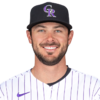

Now that he’s a Rockie, it’s all academic. The BABIP-boosting effects of Coors Field put a .300 batting average in play for anyone who makes contact at a reasonable rate, and the thin air puts a possible 30-homer outcome back on the table as well. Can you think of a recent Rockies hitter who also had suspect exit velocities but consistently put up stud numbers in spite of them? Nolan Arenado would be the answer. Introducing Bryant to that same environment is enough to move him ahead of Arenado on draft boards and even put him in the running with Austin Riley as a borderline top-50 player.
Smith looked like he’d be one of only a dozen or so confirmed closers heading into the new season. He had the role from start to finish last year and was on the mound for the final out of the World Series. But then the Braves went and signed Kenley Jansen, reportedly with Smith’s blessing, and so it’s back to setup duties for the left-hander.


Were Jansen to go down, Smith would likely be the first choice to step in, but he’s not enough of a ratios standout to have much Fantasy appeal otherwise. Consider his value to have more or less bottomed out.
The presumption during the lockout was that the Yankees would eventually find someone better than Voit to play first base, and so he routinely lasted beyond Pick 200 in early drafts, where I was happy to snatch him up. He had, after all, hit .271 with a .901 OPS since joining the Yankees late in 2018, homering at a better rate than Matt Olson during that time.
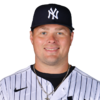

An injury-plagued year didn’t seem like reason enough to discard him, and so while the Yankees indeed found their upgrade (arguably), bringing Anthony Rizzo back on a two-year deal, they also found a new home for Voit, dealing him to a Padres club that intends to make him their full-time DH. Voit showed up to camp looking lean and healthy, so you can’t expect him to get him past Pick 200 anymore. He’s another mid-round first baseman with early-round upside, sort of like Joey Votto and Josh Bell.
Please check the opt-in box to acknowledge that you would like to subscribe.
Thanks for signing up!
Keep an eye on your inbox.
Sorry!
There was an error processing your subscription.
Too obvious? Well, maybe, but it’s worth commenting where things currently stand for the consensus No. 1 choice during the lockout. Tatis showed up to camp needing surgery on a wrist fracture he suffered at some point during the offseason and isn’t expected back until June. The question is where he should be drafted now.


Since the surgery was confirmed, he’s slipped to about 60th overall in NFBC leagues, but NFBC is a contest of hundreds rather than a dozen, which encourages bigger risks. I’ve moved Tatis closer to 100th in my rankings, but the shallower the league, the more likely I am to try for a player who could deliver first round-caliber numbers over the final two-thirds of the season. It’s possible there are lingering effects from the injury even after he returns, but his talent level is so high that it’s hard to imagine anything stopping him.
The destination figured to make all the difference for Castellanos, who I feared would wind up someplace that stifled his power as badly as Detroit did. The Marlins were rumored to be in hot pursuit, which was enough for me to avoid him in early drafts. But Philadelphia makes for a gentle landing, the Phillies offering a venue nearly as favorable for home runs as the Reds did.
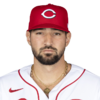

He may not hit .359 with 23 homers and a 1.109 OPS at Citizens Bank Park like he did at Great American Ball Park last year, but let’s not forget he also hit .321 with a 1.002 OOPS in his half-season with the Cubs before joining the Reds. It may be that Detroit was uniquely unsuitable for him given his tendency to drive the ball the other way. In any case, I’m back to targeting Castellanos much like I did last year, as a top-50 player draftable in the same range as Byron Buxton and Eloy Jimenez.
As with Tatis, health is the reason for Flaherty’s tumble. His shoulder hasn’t been right since he reported to camp. Officially, he has shoulder bursitis and has received a PRP injection to address it, but there are also reports of a tear that he insists has been there all along.
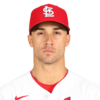

Maybe he’ll simply shut down for a couple weeks and be ready to go by late April, but it’s clear drafters are spooked. He has tumbled to about 180th overall (i.e., the Mike Clevinger/Marcus Stroman range) in NFBC drafts after being a top-25 starting pitcher before then. I’m a little more sanguine, keeping him in my top 130 or now.
The longer the Dodgers went without securing a proven closer, the more likely it seemed they’d turn back to Kenley Jansen, who remained available to the highest bidder. Certainly, they had the funds to secure him, after all. For that reason, I was never particularly motivated to pick Treinen in early drafts, figuring he could lose all his value at the drop of a hat.


But once Jansen went to the Braves, so went the last viable alternative, leaving Treinen as the most obvious ninth-inning choice. Manager Dave Roberts has at least paid lip service to a committee, but Treinen is a former All-Star closer for the Athletics and appeared to regain that form last year. It’s enough for me to draft him ahead of every other undeclared closer, a list that includes Giovanny Gallegos and Camilo Doval, among others.
Just as suddenly as all the wheeling and dealing began, it has seemingly ended with Kimbrel still on the White Sox, where he won’t be taking any save chances from Liam Hendriks. The plan back in November was for the White Sox to move him to a team that needed a closer, which is the role he’s most comfortable filling, but they apparently didn’t get an offer to their liking and seem content to move forward with the same bullpen arrangement they had late last year.
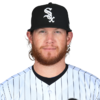

Kimbrel may still be worth targeting late in 5×5 leagues for his big strikeout totals and the fleeting chance he’ll still be traded at some point down the road, but you shouldn’t be drafting him as a likely saves source at this point.
Until Carlos Rodon signed, he basically didn’t exist to me. I needed to see what kind of terms he was offered before I formed an opinion about his health, because it clearly wasn’t right to end the year. He spent some time on the IL with shoulder fatigue, and his velocity was down 3 mph after returning. Was it a sign of something more serious? Was the elevated velocity earlier in his breakout season just a fluke?
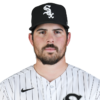

Turns out he didn’t have to settle for a one-year prove-it sort of deal. The Giants have guaranteed him $22 million over the next two years, and them being the Giants, with their track record for maximizing the potential of forgotten pitching talents, I’m inclined to trust their judgment. Now, I’m targeting Rodon among other ace talents with lingering questions, like Yu Darvish and Blake Snell.
Between the possibility of him falling into a platoon because of his struggles against left-handers, the improbability of him hitting .346 against righties again, and of course, his propensity for injury, I was already beginning to have doubts about Winker during the lockout. But then the Reds traded him to the Mariners, subjecting him to one of the worst park shifts a hitter can experience.


Winker’s career OPS is about 100 points lower on the road (.842) than at home (.937), and not all of those road games came at venues as big as T-Mobile Park. So along with those same initial concerns, there’s now the added one of his power not playing the same at his new home, and because of that, he’s now outside the top 100 overall for me.
Mitch Garver, like Voit, was a player whose value I couldn’t believe in drafts that took place during the lockout. Surely, he offered the most upside of any catcher after the studs were gone, his 162-game averages over the past three years coming out to 40 homers with an .894 OPS. Even just last year, his .875 OPS was bettered only by Yasmani Grandal and the now-retired Buster Posey.


But of course, it’s the games themselves that were the concern. Garver missed significant time last year with a variety of ailments, and even when he was healthy, the Twins seemed unwilling to offer him more than a 50/50 split with Ryan Jeffers. The Rangers went out and got him, though, which suggests they have a better appreciation for what he can do both offensively and defensively (he rates as an excellent pitch-framer). That seems to be the general consensus, anyway, because lately he’s been creeping into the top 150 overall, sometimes even going ahead of Keibert Ruiz and Tyler Stephenson. That’s more like it.
Faller 6: DJ LeMahieu, 1B/2B/3B, Yankees
All of a sudden, LeMahieu doesn’t have a position to call his own anymore after the Yankees re-signed Anthony Rizzo and acquired a new left side of the infield (Josh Donaldson and Isiah Kiner-Falefa) from the Twins. Factor in Gleyber Torres at second base, and the ever-versatile LeMahieu is clearly in line for a super utility role.


I suspect he’ll play more or less every day — maybe putting Rizzo on the bench against left-handers, maybe bumping Donaldson to DH a couple times a week — but “more or less” could be a meaningful step back for a player whose value is largely tied to how many at-bats he gets. He’s not offering much in the way of power or speed, after all. I think Ty France is easily a better choice, which pushes LeMahieu into the late rounds for me.
Bonus Risers: Tigers prospects Spencer Torkelson, Riley Greene
During the lockout, it seemed like a long shot these two could actually make the opening day roster, but the Tigers’ lack of maneuvering, along with certain comments from GM Al Avila, has spelled out the team’s intentions rather plainly. They’re ready to turn the corner from rebuilding to contending, and in that context, they’ve basically left themselves with no other choice.
The alternative to Torkelson at first base is Jonathan Schoop, with someone like Willi Castro taking over at second. The alternative to Greene in center field is Victor Reyes. The newcomers still technically need to win the jobs, but it seems like the Tigers are counting on them to do so, in which case they’re now worth reaching for in Fantasy. Target Torkelson on about the same level as Alex Kirilloff and Greene on about the same level as Jo Adell.





















Discussion about this post